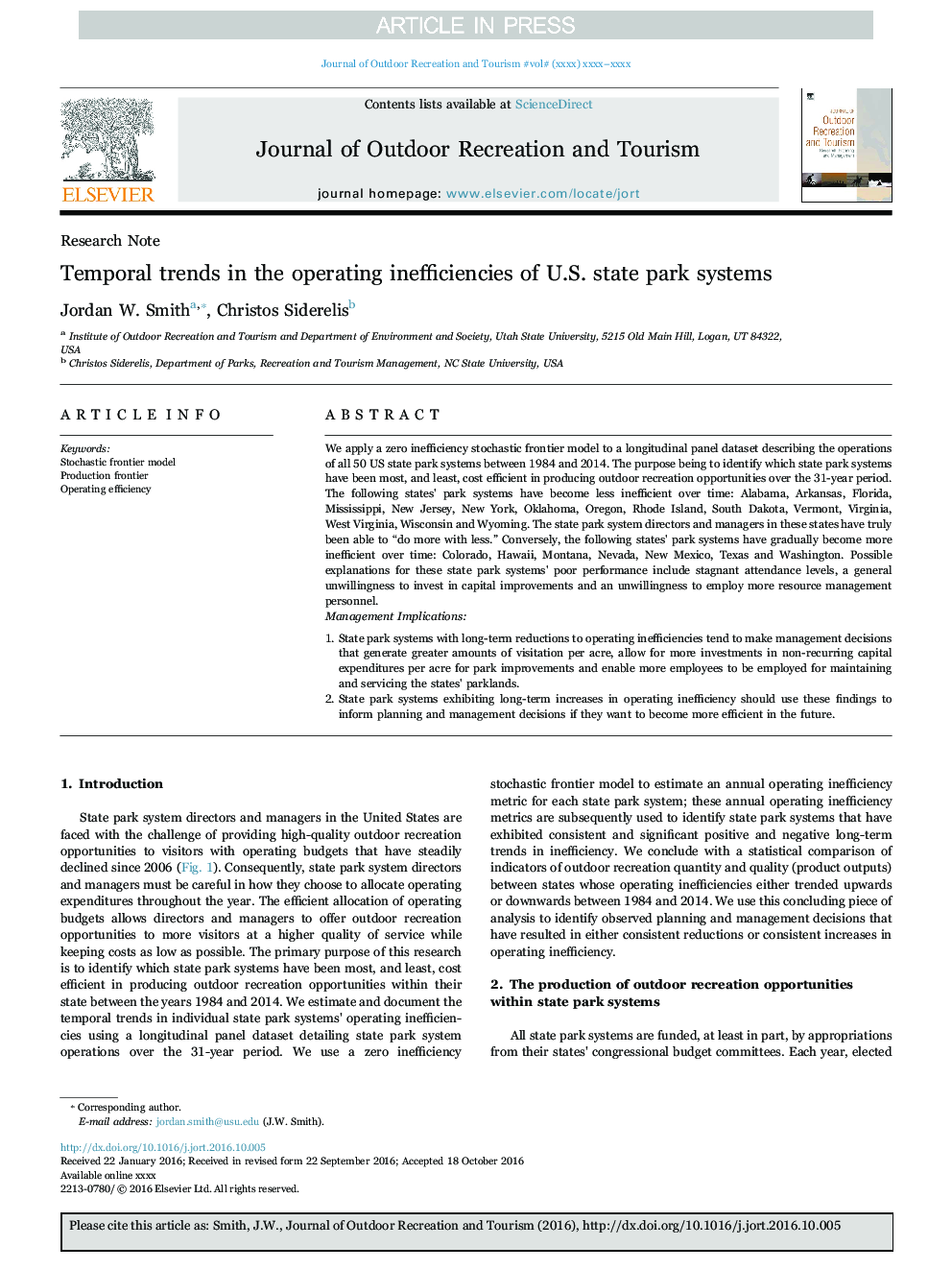| Article ID | Journal | Published Year | Pages | File Type |
|---|---|---|---|---|
| 4759901 | Journal of Outdoor Recreation and Tourism | 2017 | 8 Pages |
Abstract
We apply a zero inefficiency stochastic frontier model to a longitudinal panel dataset describing the operations of all 50 US state park systems between 1984 and 2014. The purpose being to identify which state park systems have been most, and least, cost efficient in producing outdoor recreation opportunities over the 31-year period. The following states' park systems have become less inefficient over time: Alabama, Arkansas, Florida, Mississippi, New Jersey, New York, Oklahoma, Oregon, Rhode Island, South Dakota, Vermont, Virginia, West Virginia, Wisconsin and Wyoming. The state park system directors and managers in these states have truly been able to “do more with less.” Conversely, the following states' park systems have gradually become more inefficient over time: Colorado, Hawaii, Montana, Nevada, New Mexico, Texas and Washington. Possible explanations for these state park systems' poor performance include stagnant attendance levels, a general unwillingness to invest in capital improvements and an unwillingness to employ more resource management personnel.Management Implications1.State park systems with long-term reductions to operating inefficiencies tend to make management decisions that generate greater amounts of visitation per acre, allow for more investments in non-recurring capital expenditures per acre for park improvements and enable more employees to be employed for maintaining and servicing the states' parklands.2.State park systems exhibiting long-term increases in operating inefficiency should use these findings to inform planning and management decisions if they want to become more efficient in the future.
Related Topics
Life Sciences
Agricultural and Biological Sciences
Forestry
Authors
Jordan W. Smith, Christos Siderelis,
